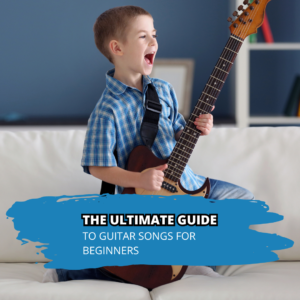Guitarists occupy a lucky position in the musical world. If they want to experiment with a whole new sound, they can get it by simply buying a pedal. However, this can often be a crutch. Instead of focusing on the tone one could get from their guitar, many guitarists will opt to spend money on new gear. In reality, there is an array of amazing sounds you can get from your guitar alone. Observe your teacher closely in your next guitar lesson. You will be surprised at some of the sounds they can get without any effects.
Volume Knob
If you are looking for a new effect, you can start by manipulating your volume knob. The first technique to try out is a volume swell. Start with your volume completely off, pick a note and then turn the volume up quickly. If you want to do multiple notes like this, quickly roll the volume down after each attack. This effect gives a very nice tone. It almost sounds like a violin. Adding some distortion and vibrato will really bring it into a whole new world. Make sure to try this technique on chords as well. You can move your whole hand to the volume knob, but using just your pinky is much more efficient. There are pedals that do this, but with practice you can operate the knob just as fluidly.
A variation on this technique is to rapidly roll the volume on and off while holding out a note or chord. It works really well for creating atmospheric sounds. This effect is in essence the same as a tremolo pedal. Experiment with turning the volume on and off fast and slow. Remember, you don’t need to roll the volume all the way down to get a good effect. In your next guitar lesson, try implementing the volume knob into your chordal playing while your teacher solos.
Picking
Picking is the most versatile part of your tonal toolkit. You can get the most drastic effects by changing your picking location. By playing closer to the bridge you will bring out the fundamental tone of a note. The tightness of the string near the bridge will provoke a twangy sound that is great for accenting ideas or for giving a whole new tonal color to your playing. With some heavy vibrato you can get a Japanese koto effect. You may not know the instrument by name, but the koto is the first sound that probably comes to your mind when you think of Japanese music.
The inverse of this is to pick towards the neck. You will really start to notice a change when you are playing over the fretboard. By doing this you bring out the overtones of a note, resulting in a warmer sound. Whereas picking near the bridge might be hard because the strings are tense, the looseness of the strings over the fretboard may make it difficult to control. With practice you will be able to get it under control. Try strumming chords for a nice effect. You can combine these techniques by gradually shifting your picking hand from the neck to the bridge, or the other way around, while playing an idea. There are a lot great tones in between these two extremes as well. During your guitar lessons look at where your teacher picks. Every player has their own ‘sweet spot’ for everyday playing.
Tone Knob
The last technique we will discuss is using your tone knob. Hold out a note or a chord, and simply do the volume tremolo or swell effect but with your tone knob. You will hear that it sounds like a slower wah pedal. That is because your tone knob works similarly to a wah pedal. The wah creates its signature sound by boosting certain frequencies when the pedal is up and taking the boost away when the pedal is down. With your tone knob, you are effectively taking away part of the signal and then putting it back. This effect is subtle but audible.
Mix it Up
When you get some of these under control, combine them with pedals to get even more possibilities. Make sure to ask your teacher about these techniques in your next guitar lesson. There are so many ways to use these sounds that they are sure to give you a new idea to try out. This is only the beginning of the new tones you can create with your guitar alone. Here is a hint: try using the other sides of your pick or attacking the strings from different angles and directions.








